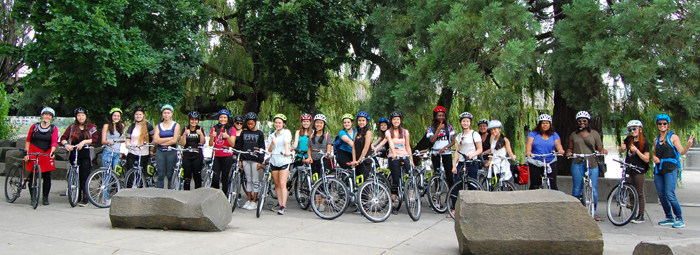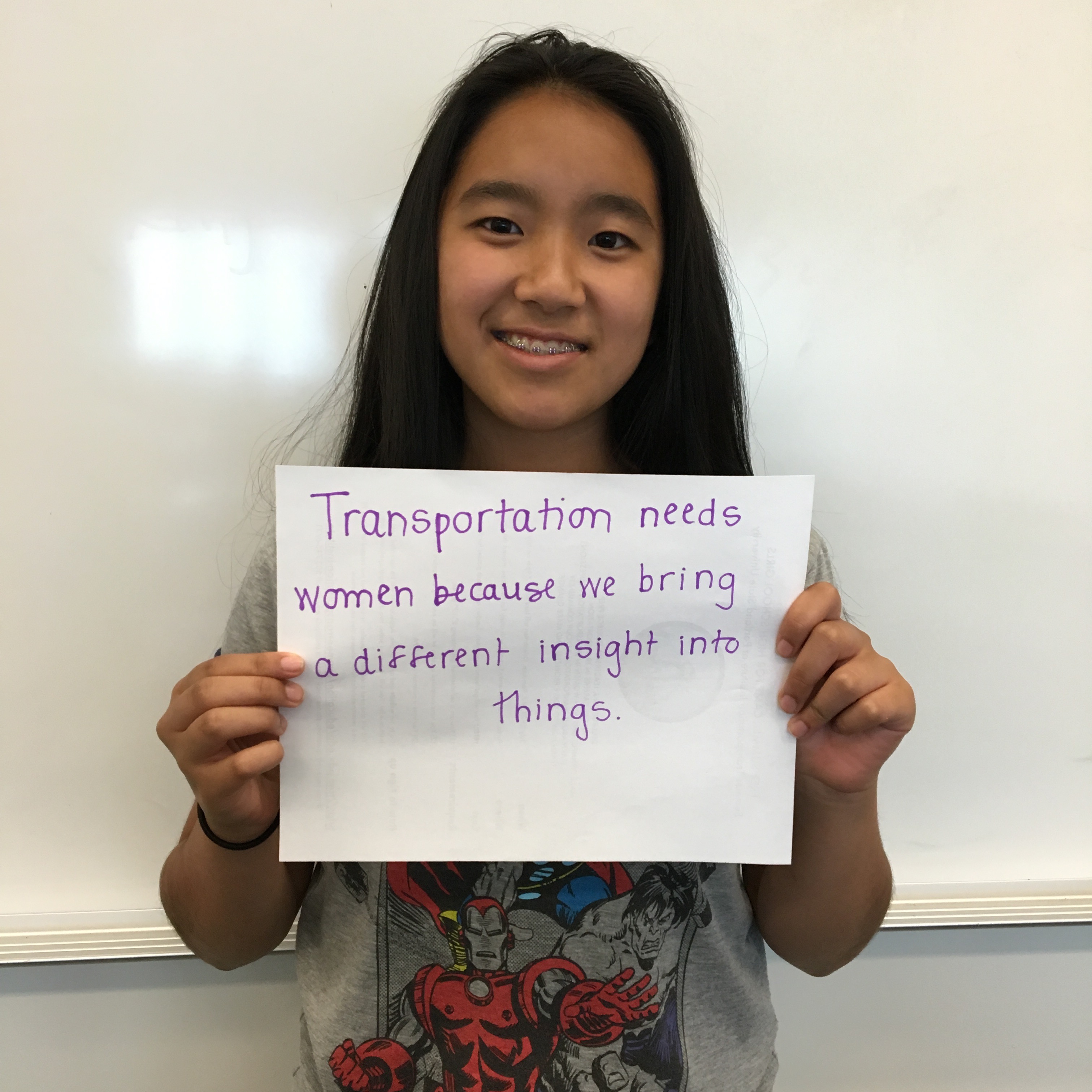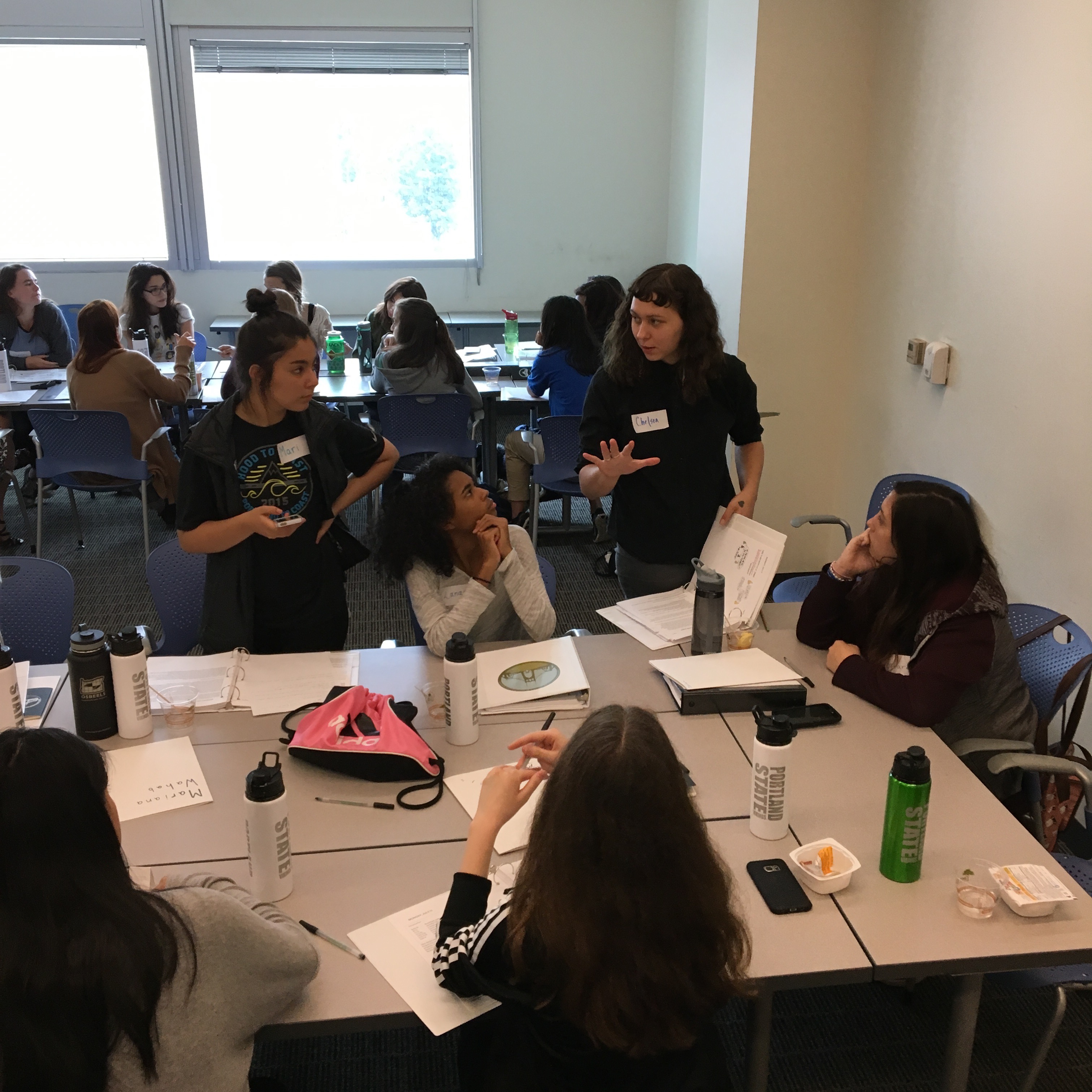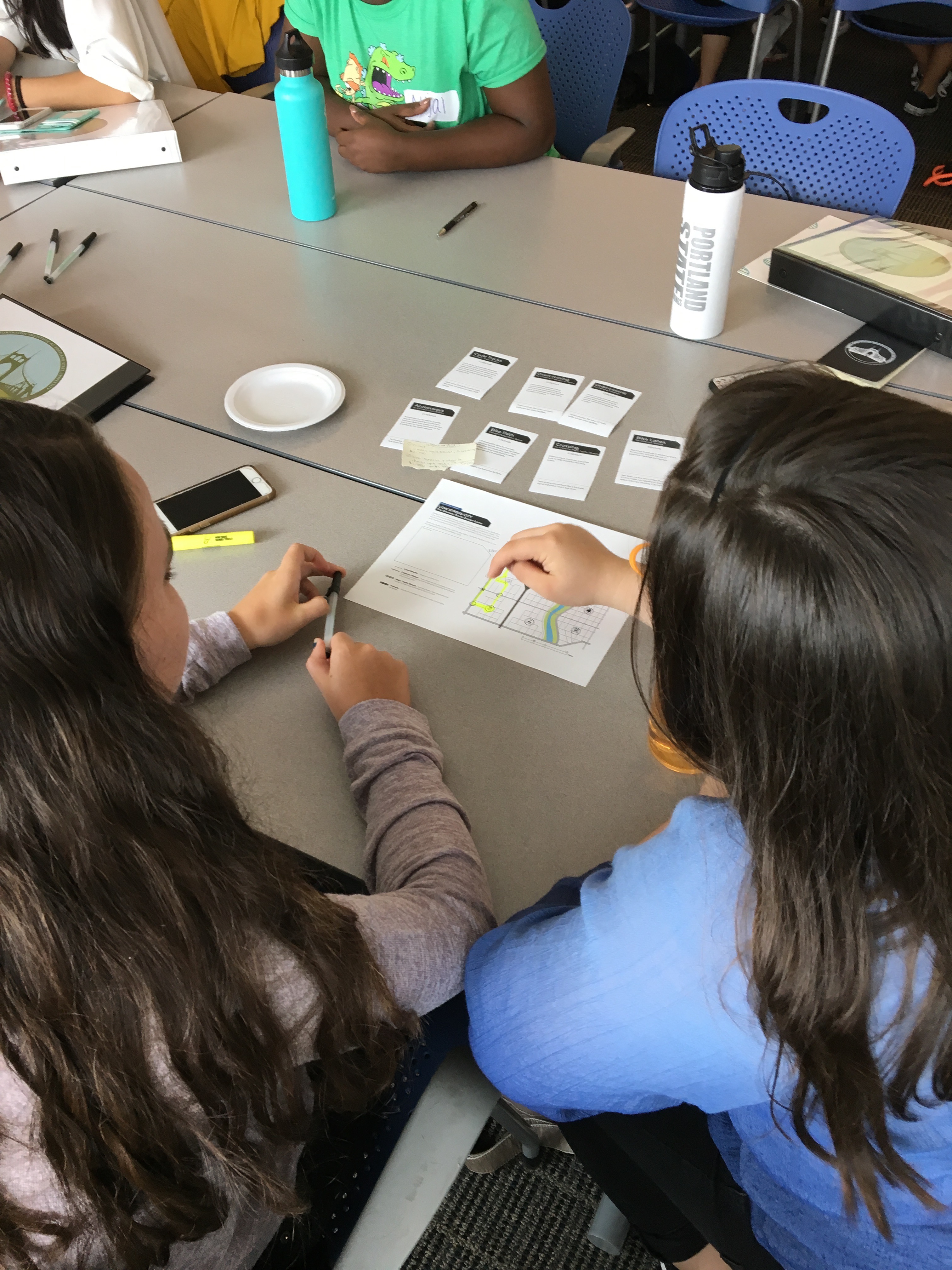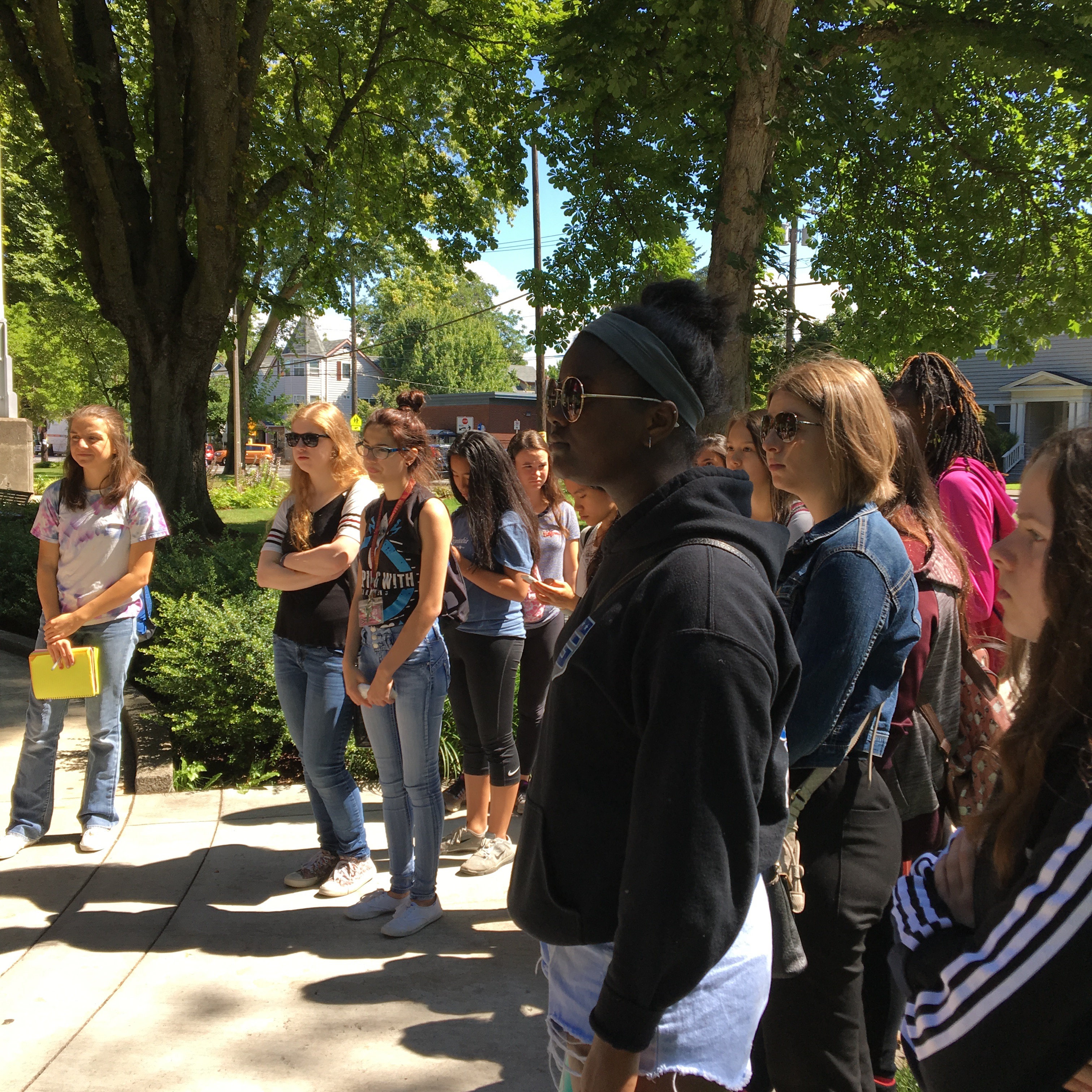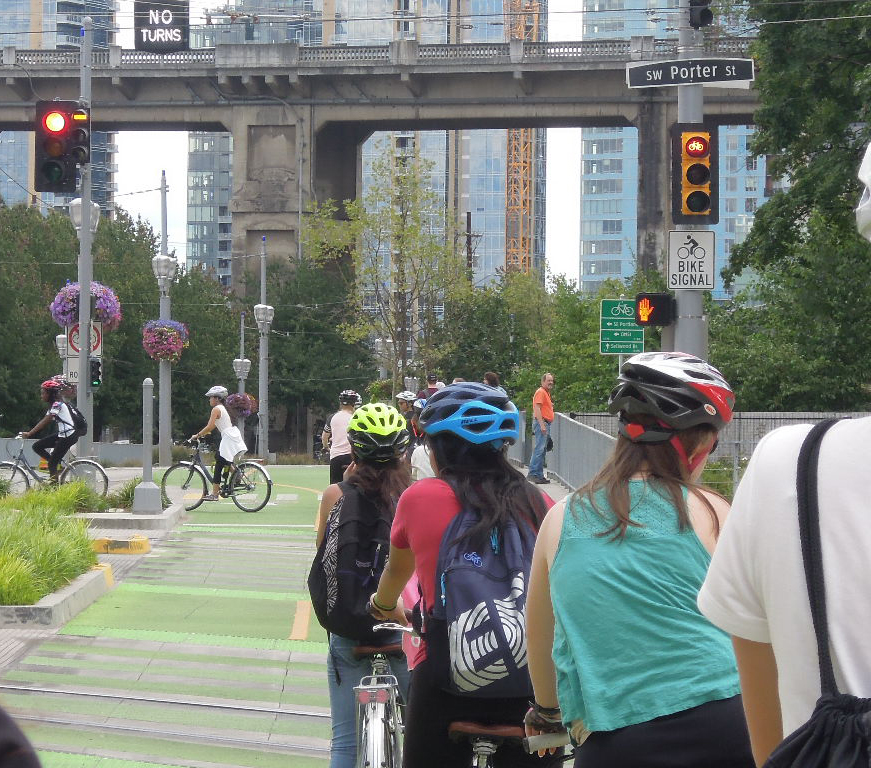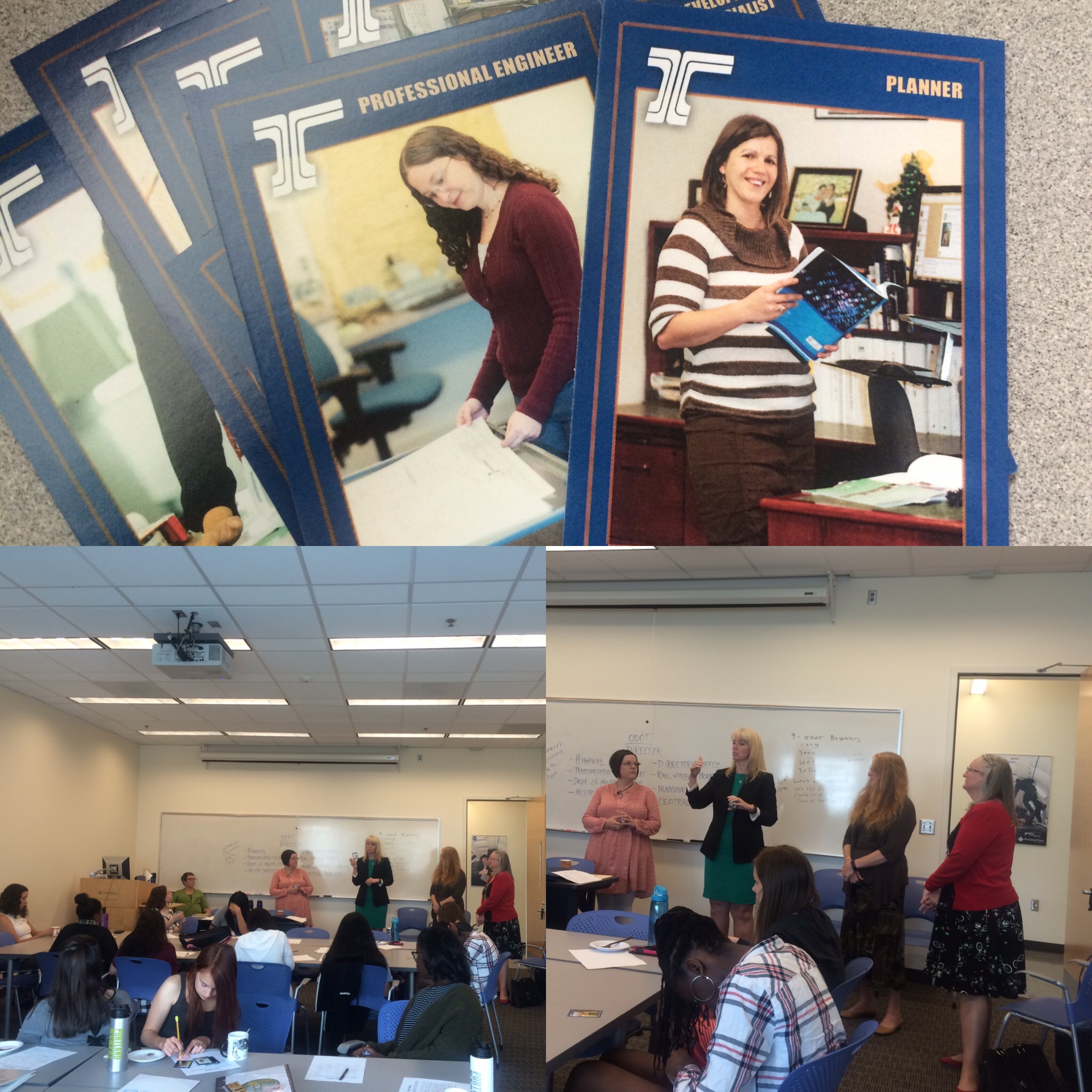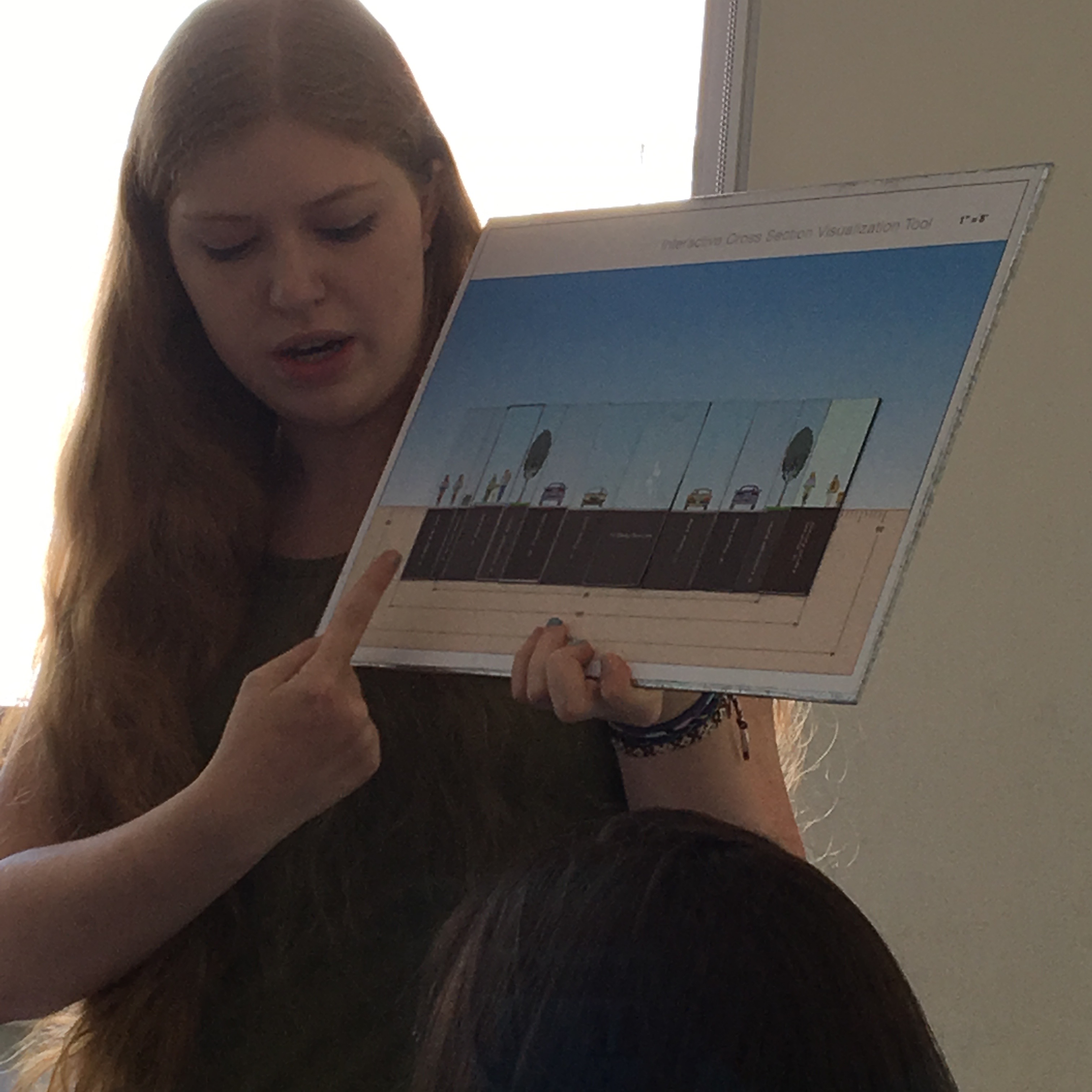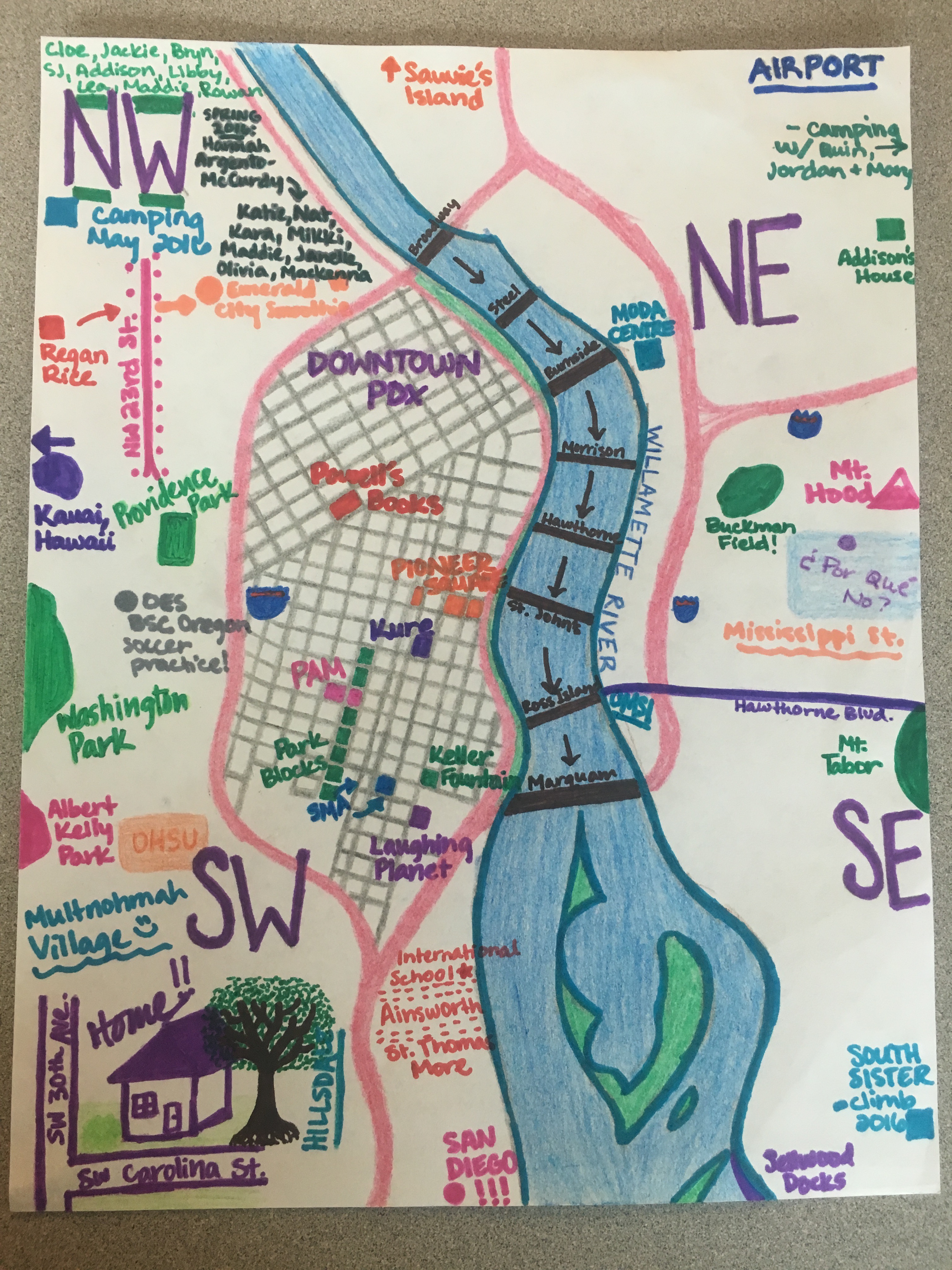One underlying goal of the National Summer Transportation Institute is participation by people from groups traditionally underrepresented in the transportation sector – in the case of the Portland Institute, our outreach efforts focused on contacting organizations supporting girls of color in STEM.
Considering the very short timeline we had for recruitment, we are glad to report that we had 22 participants! The schools included:
Century High School (2)Cleveland High School (3)
De la Salle North Catholic High School (3)
Grant High School
Jesuit High School
Kelso High School
Lake Oswego High School (2)
Oregon Episcopal School (2)
Parkrose High School
Riverdale High School
St. Mary's Academy (2)
Valley Catholic High School
Vancouver iTech Preparatory High School (2)
We gathered a group of girls whose skills in STEM subjects was strong, and whose interest in transportation was nascent. By connecting their STEM knowledge to their fundamental roots in their communities and to their own identities, we laid the foundations to develop a cohort of well-rounded and firmly grounded future leaders.
By giving girls an opportunity to identify their own place as social, political and intellectual actors within the matrix of transportation that impacts them daily, we fostered not only a concrete understanding of what the field constitutes and how they can be agents of change within it, but also how they might follow an educational path that would lead to their roles as planners and decision-makers in the future.
Girls, and particularly girls of color, are not prioritized in any way by our current transportation system. The specific needs of girls are not considered in transportation planning, and rarely are girls asked their opinions about such subjects. Girls are routinely targets of harassment on the street and on public transportation but are rarely given the tools or advocacy they need to fight back – instead they are told to simply pull back from the public sphere, or in the worst cases, told that it is their own fault. They are not encouraged to study STEM fields that would take them into engineering or planning careers, so as they grow older, their voices recede from the public debate about what makes for good transportation systems, or good civic systems generally.
Our Institute sought to give girls new tools to understand how transportation systems undergird their lives, give them role models of women leaders in the field, and show them different ways they might achieve their goals as future decision-makers in the field. Portland is a progressive place when it comes to innovation in transportation systems, and it in no small part because of the sheer number of women involved in leadership within this sector. Our Institute builds on this strength, and will provide a strong foundation for this cohort of girls as they move forward in their educations and as active and concerned citizens.
Day 1, Monday, July 11th
As 22 young strangers gathered at Portland State and learned about each other on the first day of the Summer Transportation Institute, they got some basics about transportation from director of TREC, Jennifer Dill, and Associate Director, Hau Hagedorn. Additionally, they were introduced to the City of Portland’s efforts to engage questions of equity from Zan Gibbs, Equity and Inclusion Program Manager at the Portland Bureau of Transportation.One highlight of the day was a tour of the PSU campus, featuring the insights of our educational assistants, Chelsea Hallam and Katie Selin.
The students were asked to begin to think about the identities that shape the way they perceive themselves, and the ways others perceive them.
Day 2, Tuesday, July 12th
Day two of the Institute immediately got girls working with a hands-on project lead by Jessica Roberts of Alta Planning about transportation planning and resource allocation.At lunch, we met Michelle Traver, the Public Art Project Manager at TriMet, who discussed the aesthetic, historic and engineering problems that needed to be solved as the Orange Line MAX went in through SE Portland.
After an invigorating scavenger hunt in downtown Portland, we met with some of the staff from the Portland Bureau of Transportation, hosted ably by Sarah Goforth.
Day 3, Wednesday, July 13th
Using a variety of modalities (walking, MAX, bus) we went with Cameron Whiten of Know Your City to sites where transportation infrastructure development has impacted displacement of historically Black neighborhoods in Portland. Our trip took us to stops including the at Rose Quarter, Dawson Park, One North Development, Sons of Haiti, Unthank Park, North Williams bike lanes, and the historic site of Vanport.This tour was created especially for the Summer Transportation Institute, but is now available through Know Your City – contact them for more information (knowyourcity.org).
Day 4, Thursday, July 14th
Working with Tara Goodard, PhD Candidate at PSU, we learned about how why pedestrian safety is an essential feature of transportation planning, and how transportation professionals actually count people and document the feeling of safety a street can offer. We also learned about the correlation between poor communities and traffic fatalities.At lunch, we hosted Tara Sulzen, the Field Representative for Rep. Earl Blumenauer, and talked about how transportation decisions get made on the federal level.
Day 5, Friday, July 15th
In the morning, we learned how to use GIS to map crashes with PSU transportation researchers Dr. Sirisha Kothuri (postdoctoral research associate, civil and environmental engineering) and Kristi Currans (doctoral candidate, civil engineering.) In the afternoon, we went on a tour of the Orange Line with Paige Schlupp, TriMet Guideways Manager and Brandi Lisle, Corporate Quality Director at Stacy & Witbeck. They talked about the engineering framework for the Tilikum Crossing Bridge, and the many different people and systems that had to work together to create Portland’s latest MAX line. They also answered student questions about the ways in which the new MAX line had changed the communities though which it travels.
Day 6, Monday, July 18th
The second week of the Institute began with a hands-on beta-testing of Portland Public Schools new Safe Routes To School App, presented by Brittany Smart, designer/frontend developer on the City of Portland's eGovernment team and Christine Rutan, GIS specialist. The students had a chance to go outside and use the app designed for PPS students to use to find walking routes to their neighborhood schools and for crowd-sourcing of walk route conditions.Next up, Jessica Horning, Oregon Department of Transportation Transit and Active Transportation Liaison for Region 1 (Portland metro) and Sheila Lyons, Oregon Department of Transportation Oregon Department of Transportation, Bicycle and Pedestrian Program Manager; Oregon Bicycle and Pedestrian Advisory Committee (OBPAC) brought in laser speed guns for the students to try out on the freeway off ramp at 4th Ave.
Our bike outing took us 8 miles through some of Portland’s most well-developed bike paths and boulevards, including the East Bank Esplanade and the Clinton Street Bike Boulevard.
Day 7, Tuesday, July 19th
After an informative session with Jerri Bohard, Jane Lee and Tracy Wroblewski from ODOT about career options and opportunities in transportation, the group high-tailed it on the MAX to the airport to visit the Port of Portland. There we met Susie Lahsene, who had prepared a panel of Port employees to talk with us about how the Port works, and how they had gotten involved with the organization. Then we took a bus tour around the perimeter of the airport and met a biologist responsible for managing the interface of machines and wildlife on the Port property.Day 8, Wednesday, July 20th
What does transportation have to do with the environment? When Vivian Satterfield talks about the environment, she means both the physical and social worlds we live in; to illustrate her points and the work of her organization, OPAL Environmental Justice, she used salt water taffy to signify toxic pollution – and the girls had to figure out how to mitigate it fairly – not an easy task!Gwen Shaw from Better Block PDX came into talk about citizen involvement in streetscapes throughout the city, including the newly-adopted “Better Naito” project by the waterfront.
In the afternoon, girls learned about personal safety and self-defense on public transit, including verbal and physical tools for resisting unwanted attention. Our instructors came from Girlstrength, a program of the Portland Police Bureau.
Day 9, Thursday, July 21st
Two amazing planning professionals came in to challenge us with hands-on problems today; Susan Wright taught us about street planning with an example her firm, Kittelson and Associates, had undertaken in SW Portland. Beth Wemple gave us a difficult problem about texting and driving – specifically about stopping distances and speed. Her work at Cambridge Systematics informed this fascinating problem.In the afternoon we went to TriMet and were able to not only meet some of the women who work there, but also try a bus simulator, see the master board for all the MAX trains, and see where TriMet drivers take time off between routes. Our host at TriMet was Coral Egnew, Senior Community Affair Representative and Chapter President for the Conference of Minority Transportation Officials.
Day 10, Friday, July 22nd
Our final day was a combination work-day and celebration. After we had finished up our final projects for presentation in the afternoon, we were visited at lunch by Leah Treat, head of the Portland Bureau of Transportation. We also got to meet Susan McLain, State Representative for House District 29, who told us about how she works on funding transportation projects at the state level on the Joint Committee on Transportation Preservation and Modernization.Friends and family joined us for lemonade and cupcakes as the students presented their final projects in front of a panel of women transportation professionals affiliated with WTS, the Women’s Transportation Symposium. Students were presented with certificates of achievement and a special mixed tape of songs about transportation as a parting gift!

